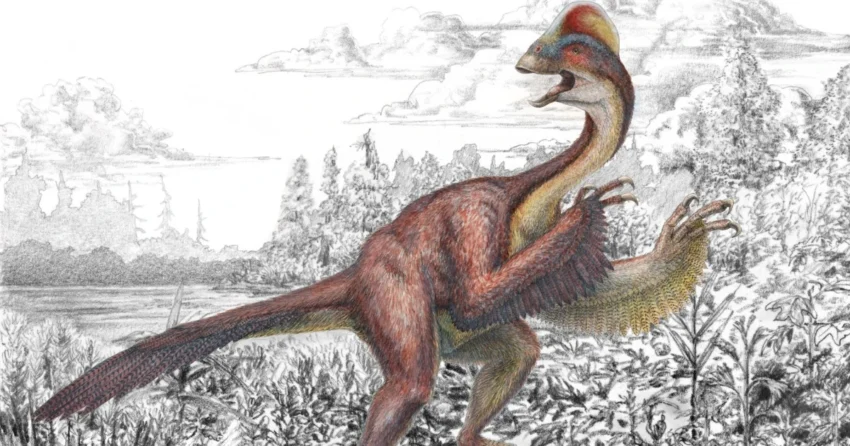The Oviraptor, often misunderstood due to its fearsome name, has intrigued paleontologists and dinosaur enthusiasts alike. Derived from Latin, “Oviraptor” translates to “egg thief,” a label earned from an early fossil discovery suggesting this creature preyed on the eggs of other dinosaurs. However, subsequent research has revealed a far more complex and fascinating picture of its diet and hunting behavior. Here’s an in-depth look at what the Oviraptor ate and how it went about finding its meals.
A Misunderstood Predator
The moniker “souleating” is a dramatic exaggeration that doesn’t align with the Oviraptor’s actual habits. Early paleontologists hypothesized the creature specialized in stealing and consuming dinosaur eggs, as its fossil was discovered atop a clutch of eggs in the 1920s. However, further studies revealed that the eggs likely belonged to the Oviraptor itself, suggesting it was more protective parent than plundering predator.
The Oviraptor’s Diet: A Mixed Bag
The Oviraptor was an omnivore, consuming a varied diet based on what was available in its environment. Fossil evidence and analysis of its beak and jaw structure suggest the following dietary components:
Eggs and Shellfish: While it may have occasionally eaten eggs, it likely targeted small, unguarded clutches rather than engaging in dramatic raids. Its powerful beak, adapted for crushing, also enabled it to feed on shellfish and mollusks.
Plants and Fruits: The Oviraptor’s diet included a significant portion of plant matter, such as fruits, seeds, and leaves. Its beak and toothless jaws were well-suited for clipping and consuming vegetation.
Insects and Small Animals: Fossil evidence suggests that Oviraptors also ate small vertebrates, insects, and possibly carrion. Their opportunistic feeding behavior likely resembled that of modern omnivorous birds.
How Did the Oviraptor Hunt?
Unlike apex predators, the Oviraptor wasn’t equipped with sharp teeth or large claws for active predation. Instead, it relied on its agility, intelligence, and specialized anatomy to forage and hunt. Here’s how it likely secured its meals:
Beak Power: The Oviraptor’s beak was a formidable tool. Capable of crushing hard shells, it allowed the dinosaur to exploit food sources that many other species couldn’t access, such as mollusks and shelled eggs.
Speed and Agility: Standing on two strong legs, the Oviraptor could move quickly and maneuver deftly, enabling it to escape predators or chase down smaller prey.
Clawed Hands: Its three-clawed hands may have been used to dig for food, strip vegetation, or catch small animals and insects.
Parental Care: One of the most remarkable traits of the Oviraptor was its protective behavior toward its eggs and young. By defending its nests, the Oviraptor ensured the survival of its offspring, a vital aspect of its ecological success.
The Ecosystem of the Oviraptor
Living during the Late Cretaceous period, approximately 75 to 71 million years ago, the Oviraptor thrived in what is now Mongolia and parts of Asia. Its environment was a mix of semi-arid plains and lush river valleys, providing diverse food sources. As an adaptable omnivore, the Oviraptor played a key role in its ecosystem, maintaining a balance between plant and animal life.
Legacy of the Oviraptor
The Oviraptor is a testament to the evolutionary diversity of dinosaurs. Far from the souleating menace its name implies, it was an intelligent and resourceful creature that contributed to the rich tapestry of Cretaceous life. With its versatile diet and fascinating behaviors, the Oviraptor offers a glimpse into the complexity of dinosaur ecosystems, reminding us that prehistoric life was as varied and dynamic as the world we live in today.For more information click dinorepeat.com

